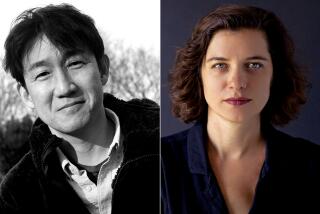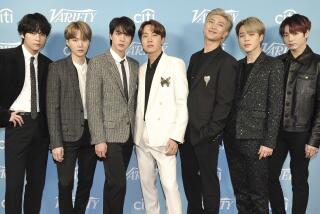Spaces that inspire awe
Even those who never set foot in church might find religion in Robert Berger’s evocative photographs of Los Angeles’ historic houses of worship.
Over 3 1/2 years, Berger visited more than 300 churches, temples and synagogues, photographing 54 of them for “Sacred Spaces: Historic Houses of Worship in the City of Angels” (Balcony Press, $59.95).
He captures the sensual and artistic aspects of worship in the form of multi-hued mosaics, brilliant stained glass, delicately rendered paintings and creatively designed buildings with soaring vaults and gilded domes.
Berger, who specializes in architecture and design photography, picked houses of worship “that had architectural or historical significance,” he says, “or something significant about the congregation. And then places that were just fun to look at.” Because he wanted to feature sites that were more than 50 years old, he originally chose 1950 as the cutoff point, then pushed that up when he discovered St. Sophia Greek Orthodox Cathedral at Normandie Avenue and Pico Boulevard, consecrated in 1952.
“I think it’s one of the most elaborate and ornate interiors in the city,” Berger says.
A few of the sites have fallen victim to the ravages of nature and vandalism. Two of the worst are Breed Street Shul and St. Vibiana’s, both of which are now being renovated.
“That’s part of the reason for doing the book,” Berger explains. In his preface to “Sacred Spaces,” he writes of his conviction that L.A.’s “continually changing landscape should be captured on film before it is transformed into something totally unrecognizable.”
Most of the houses of worship chronicled by Berger are in pristine shape, however -- shining examples of how a city not noted for its care of aging architecture can rise to the challenge.
Among those profiled:
* St. Brendan’s Roman Catholic Church in Hancock Park, a location for “Our Gang” comedies and for the climactic scene in 1953’s “War of the Worlds.”
* First Methodist in Hollywood, known for the AIDS ribbon hanging from its high tower. Popular with location scouts and used for the movies “Back to the Future” and “Sister Act.”
* Holy Virgin Mary Russian Orthodox Church, a genuine artifact of Russian culture built to serve emigrant families who found refuge here after the 1917 revolution.
* Nishi Hongwanki Buddhist Temple, described here as “the premier historical monument of Little Tokyo.”
“An interesting part was seeing how some of the properties have changed from synagogues to churches to something else,” Berger says -- like the synagogue that became a Welsh Presbyterian Church, whose choir sang in the 1941 classic “How Green Was My Valley.”
Many of these houses of worship have distinguished or colorful histories; some were designed by noted architects such as Wallace Neff and Rudolph Schindler, and others were created by movie-studio art directors with special spiritual effects.
The book’s text by architectural historian Alfred Willis recalls these histories, and an introduction by Kevin Starr, state librarian of California, informs us of the city’s profound connection to the shrine since its founding, suggested in “the very naming of Los Angeles by Roman Catholic Spain in honor of Mary, Queen of the Angels.”
More to Read
Sign up for our Book Club newsletter
Get the latest news, events and more from the Los Angeles Times Book Club, and help us get L.A. reading and talking.
You may occasionally receive promotional content from the Los Angeles Times.






